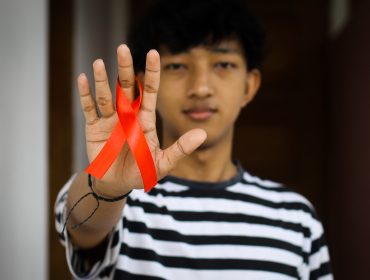Frottage
Frottage, a term derived from the French word ‘frotter,’ meaning ‘to rub,’ is a non-penetrative sexual activity that involves body-to-body rubbing, often with clothes on. This practice can occur between individuals of any gender and is often used as a form of safe sex or foreplay.
The concept of frottage has a rich history and cultural significance. Though the term was popularized by the 20th-century artist Max Ernst, who used it as a technique in his paintings, the act itself has been depicted in different kinds of art and literature throughout history. From ancient Greek pottery showcasing intercrural sex (a form of frottage) to its presence in modern-day erotic fiction, frottage has been and continues to be a part of human sexual behavior.
While it’s a common practice, it’s essential to comprehend the possible hazards and precautions associated with frottage, which we will explore in the following sections.

What is Frottage?
Frottage, as derived from various sources, is a term with dual implications, both in the realm of art and human sexuality.
In the visual arts, frottage is a technique used to create textural effects or images by rubbing a medium such as lead, chalk, or charcoal over paper laid on a granular or relief-like surface. Artist Max Ernst popularized this method.
In the context of human sexual behavior, frottage refers to the act of rubbing against the body of another person for sexual gratification. It can occur in different forms and variations, from consensual acts between partners as a form of non-penetrative sex or foreplay to non-consensual actions performed against an unsuspecting person in a crowd.
The role of consent is crucial in distinguishing between these variations of frottage. Consensual frottage can be a safe and pleasurable sexual activity, while non-consensual frottage is a form of sexual harassment or assault. Unfortunately, specific statistics on the prevalence of each form are not readily available. However, it’s important to note that any sexual activity without explicit consent is illegal and harmful.
The practice of frottage demonstrates the diverse ways humans seek sexual pleasure. However, as with any sexual activity, mutual consent, respect, and safety should always be prioritized.

STD From Frottage
Sexually transmitted diseases (STDs), also known as sexually transmitted infections (STIs), are infections commonly spread by sexual activity, especially vaginal intercourse, anal sex, and oral sex. Bacteria, viruses, or parasites can cause them and can have a range of symptoms, some of which might not be immediately noticeable.
Frottage, as we’ve previously defined, is a non-penetrative sexual activity involving body-to-body rubbing. The question arises: Can frottage lead to the transmission of STDs?
The risk of transmitting STDs through frottage is significantly lower than with penetrative sex. This is because many STDs require direct contact between the mucous membranes in the genitals, anus, mouth, or eyes.
However, it’s important to note that certain STDs can still be transmitted through skin-to-skin contact or fluid exchange, even without penetration. For instance, herpes and human papillomavirus (HPV) can be spread through skin-to-skin contact. Syphilis can be shared through direct contact with syphilis sores or syphilis rashes.
The risk of transmission also depends on how frottage is practiced. If both partners are naked, there is a higher risk of STD transmission compared to when clothing is worn.
While experts concur that the risk is lower, they emphasize that it is not nonexistent. Therefore, practicing safe sex measures, such as using barriers like dental dams or condoms, getting regularly tested for STDs, and maintaining open communication about sexual health with your partner, are crucial to minimizing the risk.
Frottage and HIV
Human Immunodeficiency Virus (HIV) is a virus that attacks cells that help the body fight infection, making a person more vulnerable to other diseases. It is distributed by contact with specific bodily liquids of an individual contaminated with HIV, most typically during unprotected sex or via sharing injection drug equipment.
Frottage, as defined earlier, involves rubbing bodies against each other for sexual pleasure. Given that it is a non-penetrative form of sexual activity, the risk of HIV transmission through frottage is generally considered very low. This is because HIV is not readily transmitted through skin-to-skin contact.
However, if there are open sores, cuts, or abrasions on the skin, and these come into contact with HIV-infected sexual fluids (semen, vaginal fluids, or blood), there could be a potential risk of transmission. Additionally, if frottage involves mutual masturbation and one partner has HIV, there could be a risk if the other partner has cuts or sores on their hands.
The following preventive steps can be taken to lower the chance of HIV transmission while engaging in frottage:
- Regular Testing: Regular testing for HIV and other STIs ensures early detection and treatment.
- Barrier Methods: Barrier methods like dental dams can provide a protective layer during sexual activities.
- Avoiding Skin Breaks: Ensuring that there are no open sores, cuts, or abrasions on the skin can reduce the risk of HIV transmission.
- PrEP: Pre-exposure prophylaxis (PrEP). This is a prescription that, when taken daily, can significantly decrease the chance of contracting HIV.
While frottage is considered a low-risk sexual activity in terms of HIV transmission, it’s important to remember that no sexual activity is entirely without risk. Practicing safer sex measures can help reduce this risk.
Gay Frottage
Gay frottage is a specific form of sexual interaction among men involving direct contact between two penises. This act is a form of non-penetrative sex that provides mutual stimulation for the individuals involved.
In gay frottage, the pleasure derived is from the friction created when two genitals rub against each other. Despite being less risky than other forms of sexual activity, it’s essential to understand that it does not entirely negate the risk of sexually transmitted infections.
Gay frottage has become a topic of interest in various adult content platforms, with numerous videos dedicated to this particular act. Despite its depiction in adult content, it is essential to remember that real-life practice of gay frottage should always involve consent and awareness of potential health risks.
Lastly, while gay frottage can be part of sexual activity, it does not define anyone’s sexual orientation. Individuals of various orientations may engage in gay frottage as part of their sexual experiences.

Safety and Precautions with Frottage
Safety and precautions in sexual activities are paramount to maintaining good sexual health. This includes not only penetrative sex but also non-penetrative practices like frottage. Awareness of the risks associated with each type of sexual activity and taking the necessary precautions can help prevent transmitting sexually transmitted infections (STIs) and unwanted pregnancies.
- Limit Partners
- Use Barrier Methods
- Regular Testing
- Communicate Openly
- Preventive Measures – Certain preventive measures, such as vaccinations for HPV and Hepatitis B, can provide additional protection.
Conclusion
Sexual activities, including non-penetrative forms like frottage, can provide pleasure and intimacy between partners. However, it’s crucial to understand that every sexual activity comes with its own risks, including transmitting sexually transmitted infections (STIs) like HIV.
Frottage, while generally considered a lower-risk sexual activity compared to penetrative sex, is not entirely risk-free. Certain STIs, like oral herpes and human papillomavirus (HPV), can still be transmitted through skin-to-skin contact. Additionally, if open sores or cuts on the skin come into contact with infected fluids, there could be a potential risk of HIV transmission.
In conclusion, making informed decisions about your sexual health, being aware of the risks associated with different sexual practices, and taking the necessary safety precautions can help ensure a safe and satisfying sexual life. Always remember that safer sex is not just about physical health but also about emotional well-being. Consent, respect, and open communication should always be the foundation of any sexual activity.
Medically Reviewed by Joshua Hwang, MD on August 15, 2023
Secure and Confidential
STD testing services
The fastest results possbile - available in 1 to 2 days

Tagged
Categorized As
Author: STD Check Editorial Team
At STDCheck.com, we go to great lengths to ensure quality content. We’re using our own collection of data. It is not bought or made up for “click-bait” purposes. We don’t entice traffic with cheesy graphics or raunchy headlines. Our information is to promote STD testing, educate people, let go of social stigmas, and bring awareness. We also provide a completely confidential atmosphere through private testing. When we produce an article, it is fact-based. We check it with medical advisors that approve it. Our staff consists of doctors and other medical professionals who peer review the content we make available on STDCheck.com. From all over the world, we have sourced the best and the brightest content developers, including medical professionals, marketing engineers, data scientists, content specialists, and media relations.




